SM in Tsavo West
 Thursday, May 19, 2011 at 02:28PM
Thursday, May 19, 2011 at 02:28PM For those of you getting excited that the nature of this blog has changed, please calm down - I'm actually talking about symbiotic mutualism.
Symbiotic mutualism occurs when two organisms of different species (be they plant or animal, bacteria or any other living thing) live in close proximity and perform functions for each other in a mutually beneficial way (as opposed to commensualism, which is a relationship between two organisms where only one party benefits but without harming the other party - eg egrets following buffalo herds to forage for insects disturbed by the grazing bovines; as opposed to parasitism where one party benefits at the expense of the other - eg ticks on a giraffe; as opposed to competition where both organisms in the relationship are harmed.)
So much for the introduction, now to the meat of my story, which I have to admit is open to discussion and awaiting comments from someone more knowledgeable than me in these matters.
In Tsavo West over the weekend, I was photographing the 'bitter apples' (solanum incanum) growing on the kopjes. I'll be honest with you, to begin with, I was only interested in the plump, round shapes of these cadmium yellow fruit which appeal to my love of form and colour.
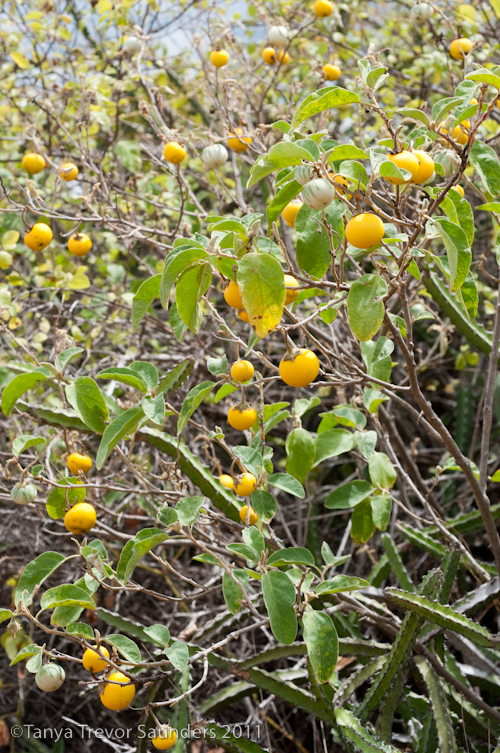
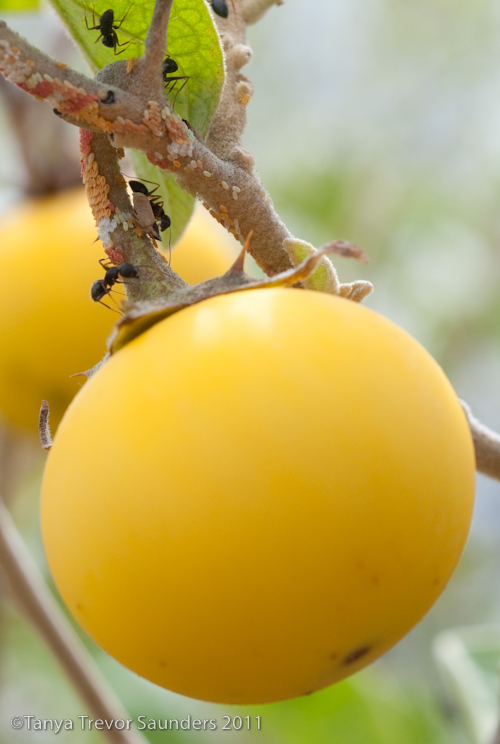
But then I noticed that some of the fruit were attracting an inordinate number of ants, which all seemed very busily occupied. As one does, I took a closer look and I saw these tiny jelly-baby-like eggs in strange pink, orange, white and red hues on the fruit stems and nearby a few minute orange insects. Bear in mind that the black ants were only 4-5mm long, and these orange insects were but a fraction of that - perhaps a millimeter long, at the most.
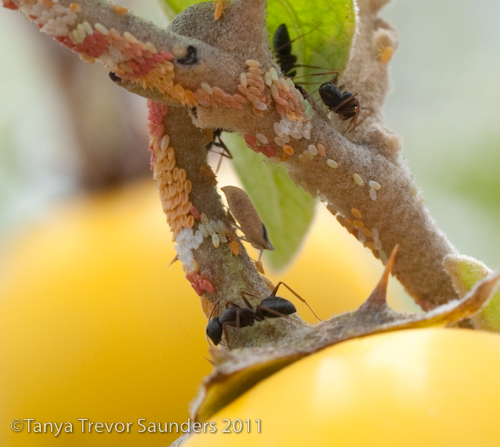
I jumped to the conclusion (and I stand to be corrected, please, if anyone can shed any more light on this) that the tiny insects are aphids - there are more than 4,400 different species of aphid in the world, some of which feed only on one type of plant - and I therefore put two and two together and assumed the jelly baby eggs must be theirs. The next step in my deliberations therefore was to question what the ants were doing, and I surmised that here was an example of ant mutualism with aphids - whereby the ants are "farming" the aphids, protecting them and their eggs from predators. In turn, the ants feed off the honeydew secreted by the aphids. These so-called "dairying" ants "milk" the aphids for honeydew by stroking them with their antennae.
[Important Note: After posting this article, I asked entomologist Dino Martins to comment and put me right on the detail of what is going on here. So please take my suppositions with a pinch of salt and concentrate more on Dino's explanation of what is going on here, which he has kindly written in the comments section below.]
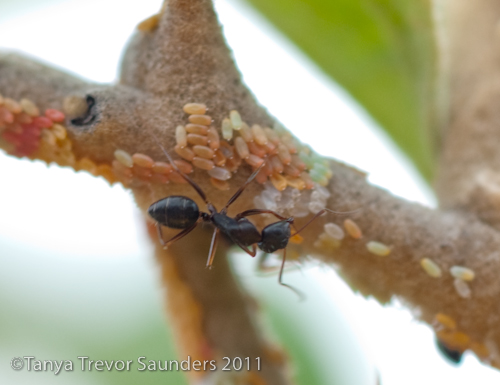
Is this ant busy "farming" and tending its charges? [Yes, I got that much right, at least!]
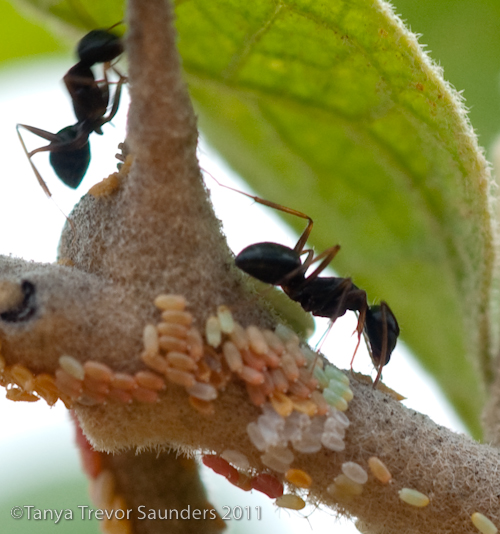 Do we see an ant stroking an aphid? [No, a nymph.]
Do we see an ant stroking an aphid? [No, a nymph.]
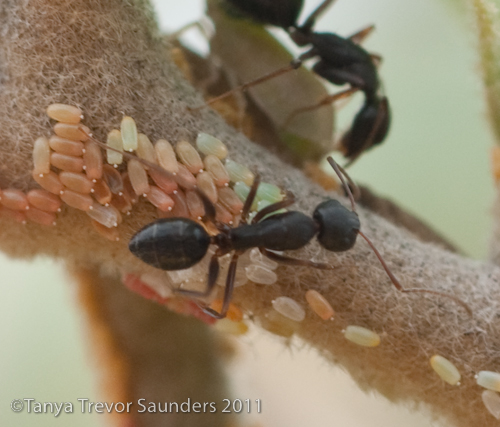 What's with the different colour eggs? Are they at different stages of development? [See Dino's notes in the comments section]
What's with the different colour eggs? Are they at different stages of development? [See Dino's notes in the comments section]
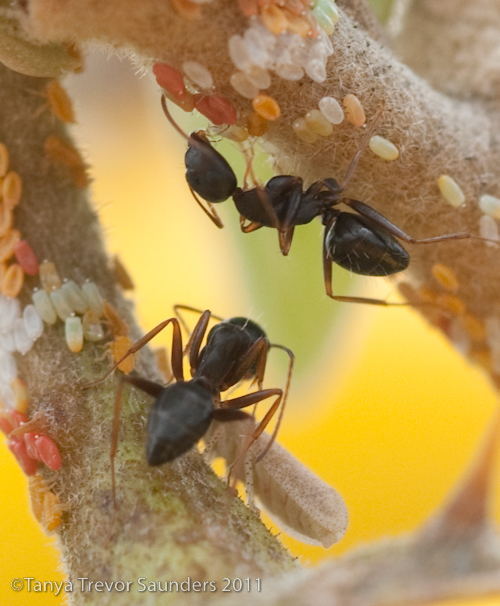
As an aside, check out the hairs on the top ant's abdomen. (Remember these ants are only 4-5mm long and yet what incredibly complex creatures they are!)
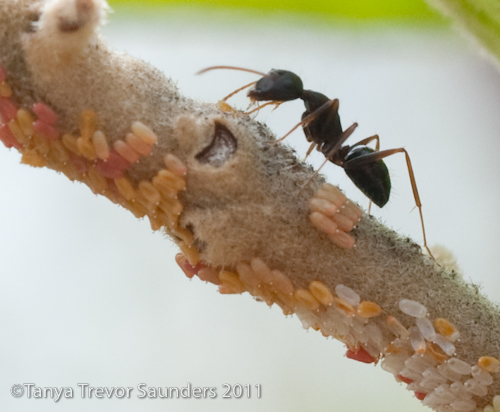 There's a whole lot of stroking going on...
There's a whole lot of stroking going on...
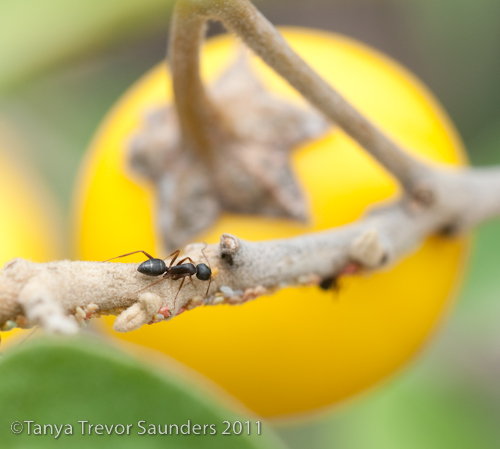 An aphid [nymph actually] getting a whole lot of attention...
An aphid [nymph actually] getting a whole lot of attention...
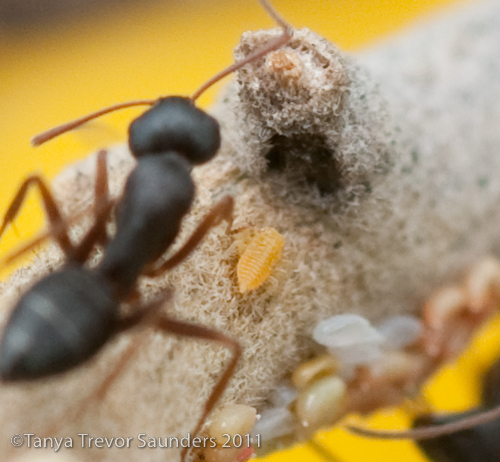 A tiny nymph, next to a 4mm-long ant.
A tiny nymph, next to a 4mm-long ant.
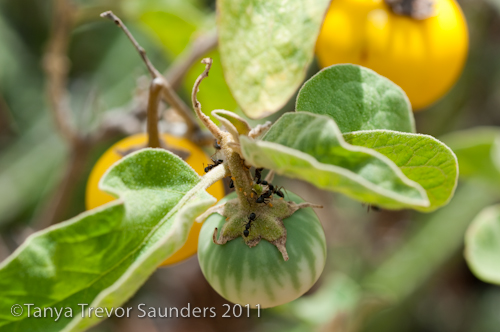 It's not just the ripe fruit attracting the insects.
It's not just the ripe fruit attracting the insects.
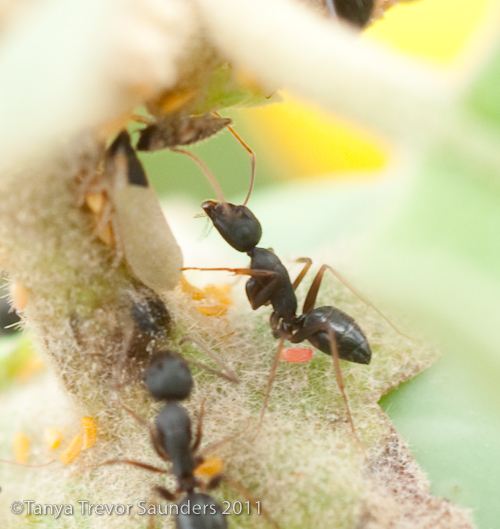
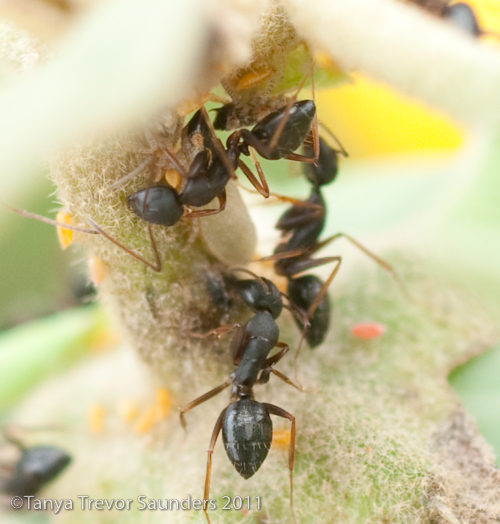
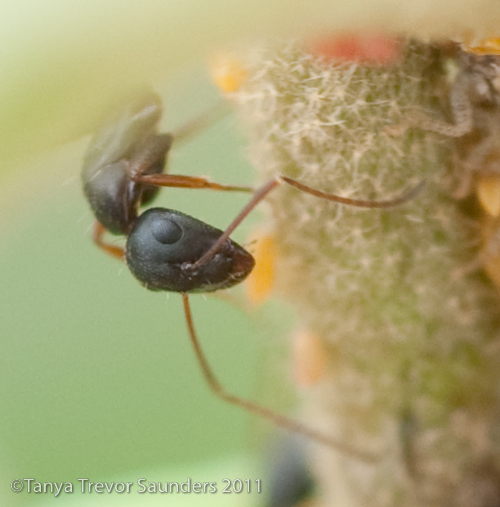 So, what planet did you rock up from?
So, what planet did you rock up from?
As you can tell from my fatuous commentary, I really am no expert in this field at all and I would welcome any more learned opinions on what is happening in this series of photos from my ant-aphid exploration day. [See Dino Martin's more indepth commentary in the comments section below].
One thing that I can tell you for sure is that hand-holding a macro lens on a sunless, windy Tsavo West day and trying to get an ant in focus, let alone an aphid, is no mean feat!





Reader Comments (2)
Hi - Thanks for sharing your observations and the photos. Yes, this is a mutualism between ants and bugs. These are not aphids but are one of the 'True Bugs' (Hemiptera), most likely in the Membracidae or Tettigometridae (both these families are tended by ants). As you observed, the ants are farming them just like we do cattle. And the ants milk them too for honeydew - a sugary treat that is a by-product of the bugs feeding on the plant. The pale white eggs are actually the empty egg cases from which the bugs have already hatched out. The coloured ones still contain nymphs about to hatch. The larger greenish-white triangular insects that they ants are also tending are the mothers of the eggs. The ants are like their nannies... The young nymphs are the pale orange bugs that you can see the ants standing over. Thanks for sharing these great pictures!
Thank you for your explanation, Dino - I knew it would be a good idea to ask you to put me right on the detail....very kind of you to take the time to comment.
Readers, please ignore my suppositions and listen to Dino instead - he is a respected entomologist.